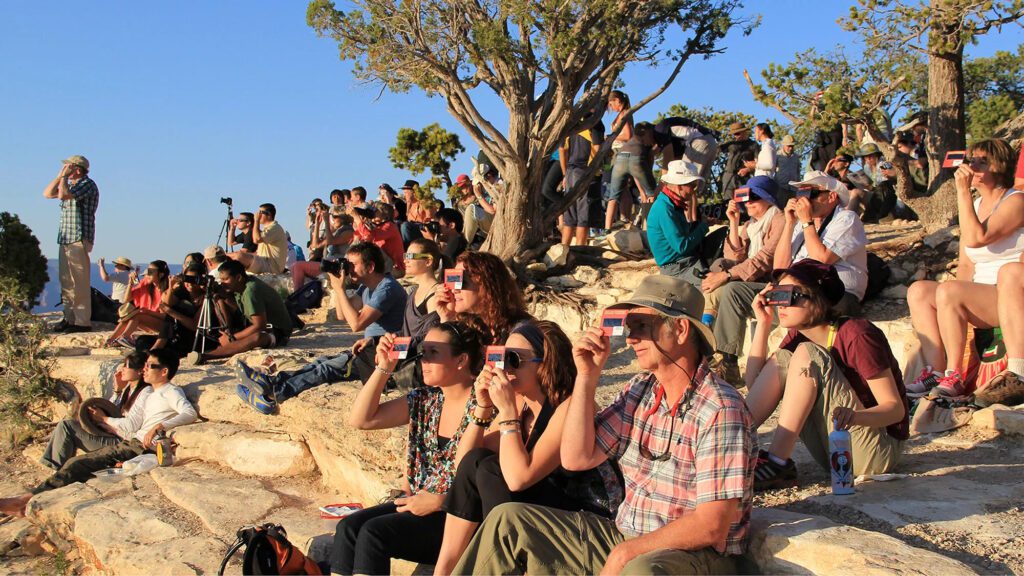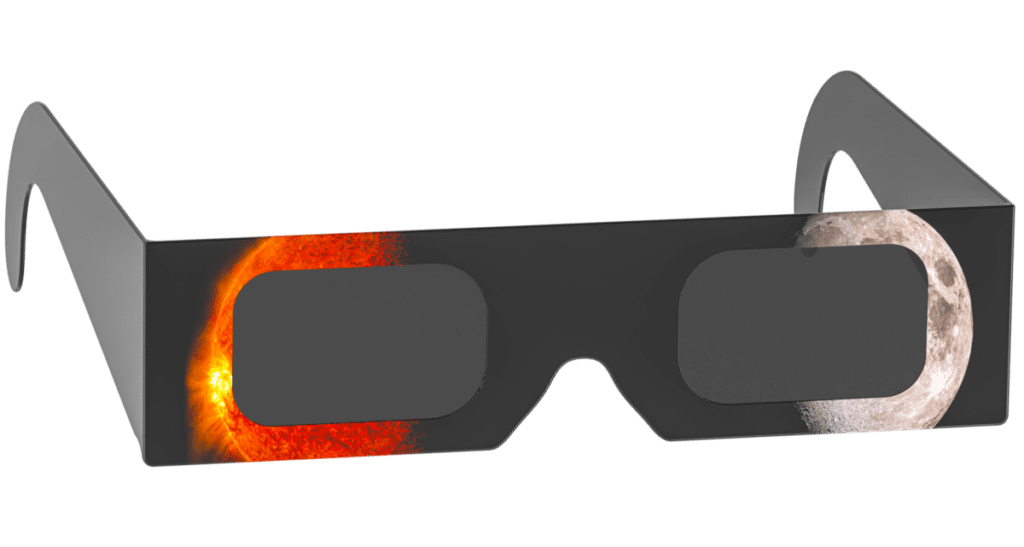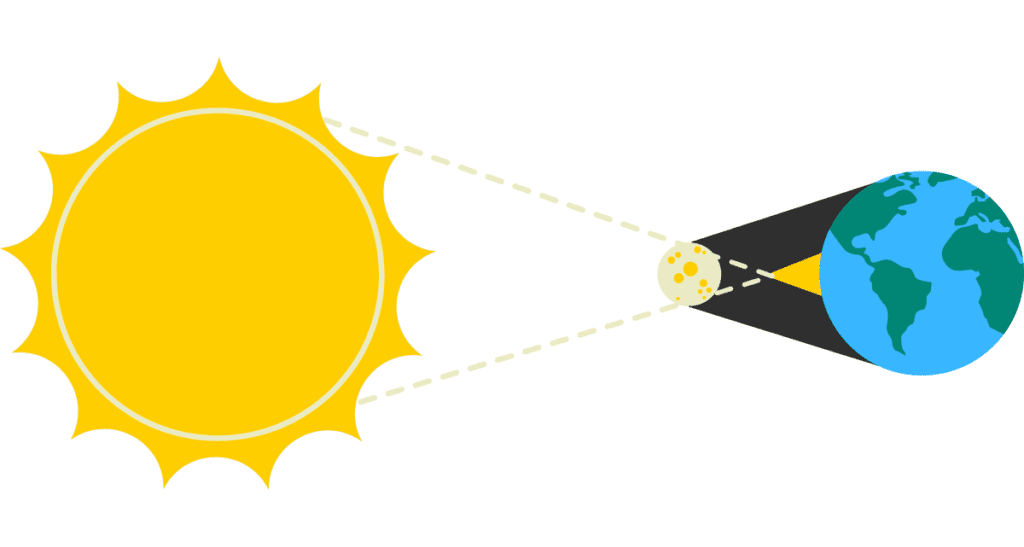Total Solar Eclipse
Countdown
Totality Begins in Austin, TX
April 8, 2024 at 13:36:09 pm (CST)
Learn more about this unique event, including what’s going on around Leander ISD:
As you prepare your students for the eclipse take care to not ruin the wonder of this special event. They should be allowed to see the shadows and corona live, as the eclipse is happening, instead of viewing them in videos, books, or images online.
Solar Safety around Leander ISD
Safety is the number one priority when viewing a total solar eclipse. As each school makes their own plan to provide students with the opportunity to watch the eclipse, the district has been working with them on a set of safety guidelines to ensure for a safe learning experience.
It’s essential for individuals to take appropriate precautions such as wearing proper eye protection and practicing sun safety (e.g., hydration, and applying sunscreen), to minimize the risk of medical issues during and after a full solar eclipse.

Leander ISD, thanks to PTA, campus, and district purchases of safety glasses along with viewers donated by Buc-ee’s can provide all students and staff with eye safety devices.
Ensure proper eye safety precautions when viewing the event:
- Looking directly at the sun during an eclipse without proper eye protection can lead to solar retinopathy, which is damage to the retina caused by solar radiation. This can result in blurred vision, blind spots, or permanent vision loss.
- Viewers must look through safe solar viewing glasses (“eclipse glasses”) or a safe handheld solar viewer at all times when watching the partial phases of the solar eclipse directly with your eyes, which happens before and after totality. “Eclipse glasses” are NOT regular sunglasses; regular sunglasses, no matter how dark, are not safe for viewing the Sun.
- Safe solar viewers are thousands of times darker and ought to comply with the ISO 12312-2 international standard. NASA does not approve any particular brand of solar viewers.
- Always inspect your eclipse glasses or handheld viewer before use; if torn, scratched, or otherwise damaged, discard the device.
- Do NOT look at the Sun through a camera lens, telescope, binoculars, or any other optical device while wearing eclipse glasses or using a handheld solar viewer — the concentrated solar rays will burn through the filter and cause serious eye injury.
Be sure you’re familiar with when you need to wear specialized eye protection designed for solar viewing by reviewing these NASA safety guidelines.

Except during the brief total phase of a total solar eclipse, when the Moon completely blocks the Sun’s bright face, it is not safe to look directly at the Sun without specialized eye protection for solar viewing. Viewing any part of the bright Sun through a camera lens, binoculars, or a telescope without a special-purpose solar filter secured over the front of the optics will instantly cause severe eye injury.
When watching the partial phases of the solar eclipse directly with your eyes, which happens before and after totality, you must look through safe solar viewing glasses (“eclipse glasses”) or a safe handheld solar viewer at all times. You can also use an indirect viewing method, such as a pinhole projector. Here is a series of GIFs from NASA that can be used to demonstrate how and when to safely put on and take off your glasses.
School Nurse – Clinic Visits
In the event a student presents at the clinic exhibiting symptoms such as eye discomfort, headache or dizziness, the nurse will notify the parent/guardian and recommend they follow up with a physician.
In cases where a student’s chief complaint is eye pain or alterations in vision, the nurse will promptly notify the parent/guardian and highly recommend a consultation with an ophthalmologist.
Note: Parents/guardians will NOT be expected to pick up their student unless they choose to do so. A doctor’s note and will NOT be required to return if eye discomfort is the primary concern. Reach out to your campus nurse if you have any questions or concerns.
Be Prepared And Plan Ahead!
The eclipse is a special event for not only our community but for stargazers coming into town. An influx of visitors may cause increased traffic in our areas. We urge our parents, employees and community members to be prepared and plan ahead.
- Plan your travel accordingly
On the day of the eclipse, plan to leave early or plan to be late. Consider carpooling or walking to school to avoid traffic. Stay informed about traffic patterns and potential road closures. - Avoid non-essential travel
On the day of the eclipse, plan to leave early or plan to be late. Consider carpooling or walking to school to avoid traffic. Stay informed about traffic patterns and potential road closures. - Plan for increased traffic going home
Because eclipse totality is close to 2 p.m. plan for delays getting home. Remember, a way around traffic is to plan a safe walk to school. Parents, if your student takes the bus home, plan for delays.
What’s happening around Leander ISD?
This is a rare and a once-in-a-lifetime event! LISD students will become experts on experiencing darkness at noon. This article provides information specific to our region on the eclipse and its viewing. Between 1 p.m. and 2 p.m. will be the optimal time for viewing in our area. Between district, PTA, and campus funds we are ensuring that every staff member and student will have access to eclipse glasses for the day (1:1 or 2:1 ratio).
Thanks to PTA, campus, and district purchases of safety glasses, along with viewers donated by Buc-ee’s, Leander ISD can provide all students and staff with eye safety devices.
More information will be coming that includes optional lessons to utilize and an opt out form will be sent out by campuses for families who don’t want their students to participate. Contact Jennifer Kaszuba, Anna Wydeven, or Alicia Westcot with questions.
LISD Viewing Plans
- Curriculum Department, Campus Administrators, and PTAs/Parent Organizations, have purchased/ordered enough safety glasses for all students and school-based staff.
- The elementary and secondary curriculum teams are developing lessons/learning activities to support learning for this once-in-a-lifetime learning experience. Campus administrators and teachers have the autonomy to showcase this event in a way that works best for their community. Check with your campus for more details.
- Between 1 p.m. and 2 p.m. will be the optimal time for viewing in our area.
What is a Solar Eclipse?
A total solar eclipse happens when the Moon passes between the Sun and Earth, completely blocking the face of the Sun. People viewing the eclipse from locations where the Moon’s shadow completely covers the Sun – known as the path of totality – will experience a total solar eclipse. The sky will darken, as if it were dawn or dusk. Weather permitting, people along the path of totality will see the Sun’s corona, or outer atmosphere, which is usually obscured by the bright face of the Sun.

What to Expect
The total solar eclipse will begin over the South Pacific Ocean and will cross North America, passing over Mexico, United States, and Canada. Weather permitting, the first location in continental North America that will experience totality is Mexico’s Pacific coast at around 11:07 a.m. PDT.
The path of the eclipse continues from Mexico, entering the United States in Texas, and traveling through Oklahoma, Arkansas, Missouri, Illinois, Kentucky, Indiana, Ohio, Pennsylvania, New York, Vermont, New Hampshire, and Maine. The eclipse will enter Canada in Southern Ontario, and continue through Quebec, New Brunswick, Prince Edward Island, and Nova Scotia. The eclipse will exit continental North America on the Atlantic coast of Newfoundland, Canada, at 5:16 p.m. NDT.

What makes this one special?
- The April 8, 2024, eclipse will be a total solar eclipse. It will be the last total solar eclipse visible from the contiguous United States until 2044.
- A remarkable fact is that the entire metropolitan area of Dallas and Fort Worth, a megalopolis of 7 million people, is entirely inside the path of totality! In fact, 12 million people in Texas reside within the path of totality, by far the largest of any state in the US.
- The total solar eclipse first enters Texas at the international border at 1:27 p.m. CDT leaves Texas at the Oklahoma and Arkansas borders at 1:49 p.m. CDT. Through Texas, the speed of the Moon’s shadow will accelerate from about 1580 miles per hour to about 1850 miles per hour.
- You can expect the temperature to drop about 10 degrees Fahrenheit (5 degrees Celsius) depending on the humidity and cloud cover at your location.
Other Resources
- NASA 3D Interactive Experience
- NASA FAQs
- NASA Safety Guidelines
- 3D Eclipse Path and Visibility
- Livestreams & Webcasts
Content Credit: NASA, Great American Eclipse
